

1. FI ECU
The FI ECU analyzes the motorcycle conditions based on the signals from the front/rear wheel rotation sensors and FI sensors (such as the crankshaft sensor and main throttle sensor), and controls engine power by reducing the number of ignition and retarding the ignition timing. The mode-switching signal is transmitted to the FI ECU by the CAN system via the meter ECU. If a failure occurs in the system, the FI ECU deactivates S-KTRC and displays the warning indication in the meter.
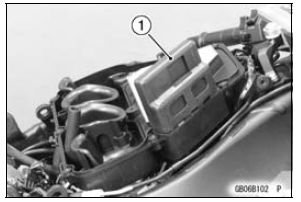
2. Wheel Rotation Sensor
The wheel rotation sensor converts front and rear wheel rotation speed to a pulse signal and transmits it to the FI ECU.
As for the KIBS (Kawasaki Intelligent anti-lock Brake System) equipped model, a pulse signal is transmitted via the KIBS ECU.
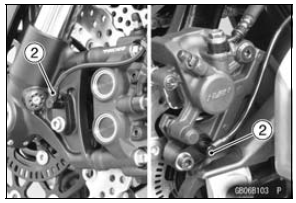
3. Crankshaft Sensor
The crankshaft sensor converts the engine speed to a pulse signal and transmits it to the FI ECU.
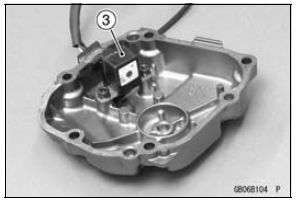
4. Main Throttle Sensor
The main throttle sensor converts the throttle position to a voltage signal and transmits it to the FI ECU.
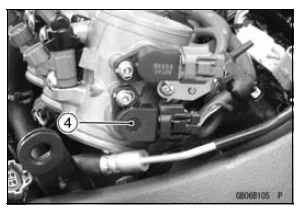
5. S-KTRC Button
The mode-switching signal is transmitted to the meter
ECU by depressing the S-KTRC button (0.3
 0.4 sec.).
0.4 sec.).
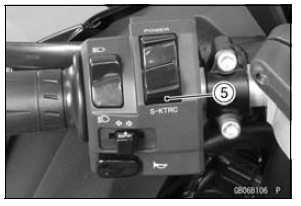
6. Multifunction Meter
The multifunction meter receives a mode-switching signal and displays the mode [A], and transmits it to the FI ECU by the CAN system.
When a failure occurs in the system, themultifunction meter displays the warning indication by blinking the warning indicator light (yellow LED) [B] and mode indicator symbol.
It also displays the S-KTRC operating conditions in the level indicator [C].
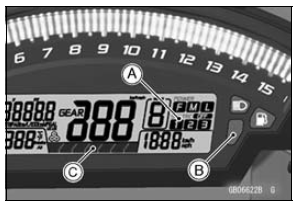
7. KIBS ECU
As for the KIBS equipped model, the front and rear wheel sensor signals are transmitted to the FI ECU via the KIBS ECU.
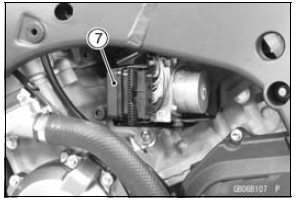
 Overview
Overview Mode-switching
Mode-switchingClutch Cover Removal
Remove:
Right Lower Fairing (see Lower Fairing Removal in the
Frame chapter)
Clutch Cable Lower End (see Cable Removal)
Clutch Cover Bolts [A]
Turn the release lever [A] counterclockwise as shown,
and remove the clutch cover.
About 90В° [B]
...
ESD (Electronic Steering Damper) ECU Communication Error (Service Code 3C,
ZX1000JD/KD)
ESD ECU Communication Line Inspection
When the data (for status of ESD system) is not sent from
the ESD ECU to the meter unit and ECU, the service code
3C is displayed.
The data is sent through the CAN communication line.
The service code 3C is detected with the meter unit.
The FI symbol does ...
Radiator Hose and Pipe Inspection (coolant leak, damage, installation
condition)
The high pressure inside the radiator hose can cause
coolant to leak [A] or the hose to burst if the line is not
properly maintained.
Visually inspect the hoses for signs of deterioration.
Squeeze the hoses. A hose should not be hard and
brittle, nor should it be soft or swollen.
Repl ...